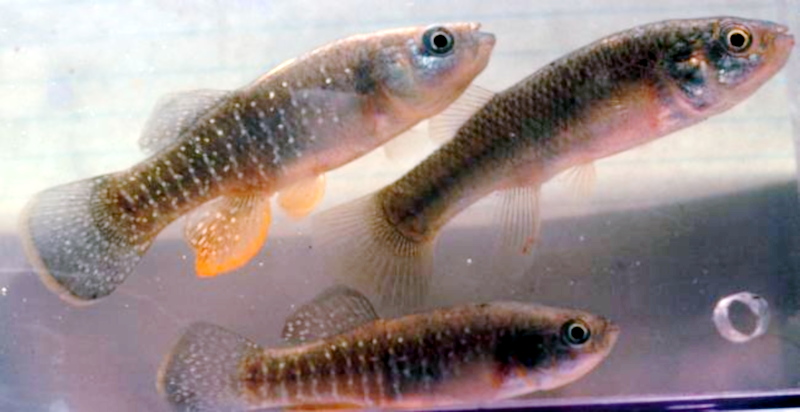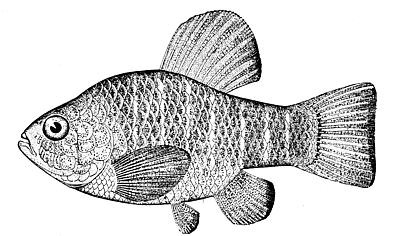 Hello, Frank Indiviglio here. In common with most aquarists, I’m enthralled by brilliantly-colored reef fishes. However, I find that little can compare to the thrill of catching, keeping and breeding native fishes. Today I’d like to look at three hardy species that are among the most beautiful and interesting I’ve yet to keep. I’ve collected all by seine net and minnow trap within NYC limits and off nearby Long Island.
Hello, Frank Indiviglio here. In common with most aquarists, I’m enthralled by brilliantly-colored reef fishes. However, I find that little can compare to the thrill of catching, keeping and breeding native fishes. Today I’d like to look at three hardy species that are among the most beautiful and interesting I’ve yet to keep. I’ve collected all by seine net and minnow trap within NYC limits and off nearby Long Island.
Note: Please check your state’s regulations before collecting native fishes.
Classification
All three are classified in the Family Poeciliidae, and are the only members of that family native to New York’s coastline.
Description and Range
Mummichog, Fundulus heteroclitus
The stoutly-built Mummichog reaches 6 inches in length and is olive in color. Breeding males rival any tropical fish in coloration, being steely-blue above and marked with silvery bars and white and yellow spots. The area before the anal and caudal fins takes on a bright yellow hue (these fins are shaped differently from the females’ and are used as claspers during mating).
Mummichogs are found from Canada to northern Florida, and are widely introduced elsewhere. Those established in Spain are believed responsible for drastic declines in the populations of several native fishes.
Striped Killifish, Fundulus majalis
This largest member of the genus may top 7 inches in length and is olive in color. The sexes appear to be of different species – females bear black longitudinal lines along their sides and disrupted vertical bars near the tail while males are marked with 14-20 black vertical stripes. Breeding males have black backs and orange-yellow sides, and sport yellow patches on the belly.
The Striped Killifish ranges from New Hampshire to northern Florida.
Sheepshead Minnow, Cyprinodon variegatus
This minnow reaches 3 inches in length, and is so deep-bodied as to appear rounded in profile. It is olive in color, and attractively mottled with darker patches. Breeding males are quite colorful – iridescent blue above with salmon-colored bellies.
The Sheepshead Minnow ranges from Cape Cod south along the Eastern Seaboard through Florida to northeastern Mexico.
Habitat
All three species inhabit shallow coastal waters such as salt marshes, tidal inlets, bays, harbors and brackish lagoons, but occur along open beaches as well. The Sheepshead Minnow and Mummichog sometimes occur in fresh water as well; the former can survive permanently in fresh water, as is evidenced by an introduced population in Texas.
I have collected Mummichogs in the fresh water reaches of the Bronx River, in areas isolated from marine waters by a waterfall. I assume they arrived as released fishing bait, but do not know if they breed in the river. Individuals in my collection have lived in fresh water for several months without ill effects.
Diet
All feed upon small shrimps, crustaceans, fishes and their eggs, worms, algae, decaying plants and carrion. Sheepshead Minnows have sharp teeth and are said to attack fish nearly as large as themselves, but I have not observed this among aquarium specimens.
Reproduction
Spawning occurs from late spring through mid-summer, depending upon the range.
Miscellaneous
During the winter, dormant Mummichogs have been found below 6-8 inches of mud in tidal creeks. It is assumed that the other 2 species move offshore as winter approaches.
Further Reading
You can read more about the natural history of each of these fishes in this US Fish & Wildlife Services Bulletin.
On to captive care next time…until then, please write in with your questions and comments.
Thanks,
Frank Indiviglio
Striped Killifish image referenced from wikipedia and originally posted by Steven G. Johnson
 That Fish Blog – Aquarium Advice and Information
That Fish Blog – Aquarium Advice and Information



